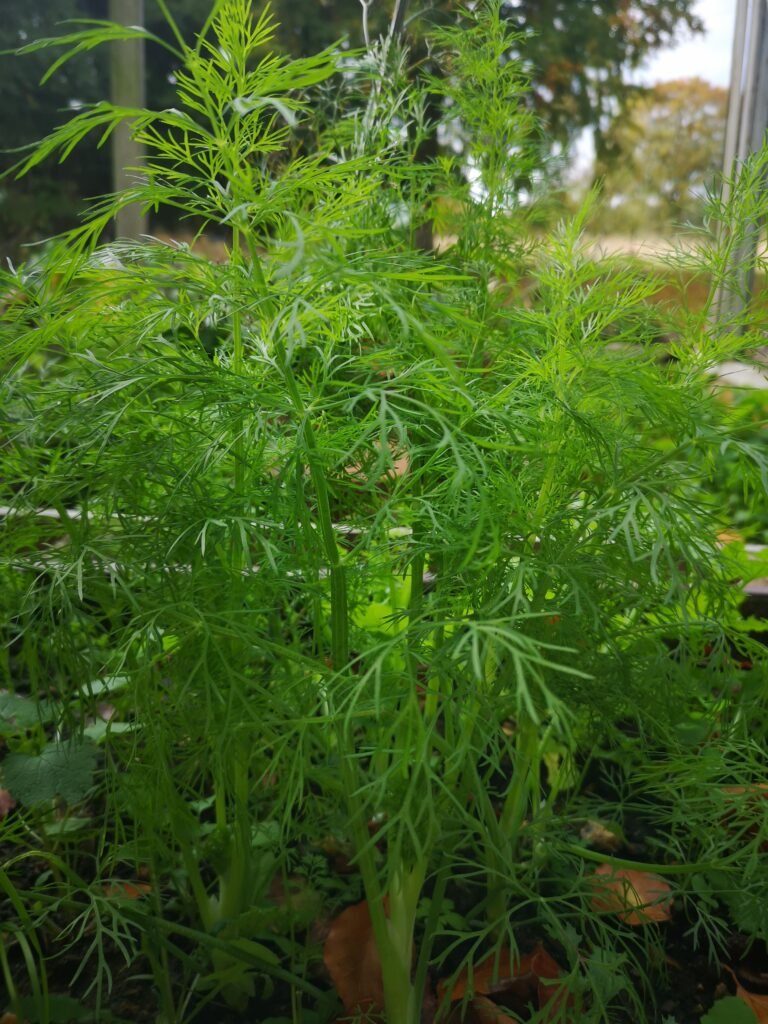Annual plants are plants that complete their life cycle within one growing season before dying, going from seed to plant to flower to seed. Some of these plants can be kept alive through winter using certain methods, but they are generally considered annuals where you will let them die at the end of the season.
Basil
When to plant
You can sow seeds inside from late February until July.
If you are sowing seeds outside, then do so when the temperature has warmed up to 15°C, probably around June.
Where to plant
Basil seeds are best sown inside. They don’t need to go anywhere specific in a crop rotation plan, but they want to be planted in full sun, with 8-12 inches between plants.
They grow well alongside many plants, including tomatoes, carrots, parsnips, marigold, and borage.
You’ll want to avoid growing them with sage, thyme, and cucumber.
Growing
Water regularly when it’s hot.
If you want to prolong the production of leaves, pinch out any flower stems that come up in mid summer. Letting them flower will stop leaf production, but will act as a good nectar source for pollinating insects like bees.
Harvesting
You can harvest the leaves throughout summer, picking up to a few leaves from each plant, leaving at least 2/3 still on it. If you are going to be cooking with them, you can pick the leaves and immediately freeze them. I place them in a single layer on a baking tray to prevent them sticking together, and then when frozen (usually 30 mins or less) transfer them to a bag. Use as required. They will defrost in minutes, if not seconds.
Basil flowers are edible, and are said to have a milder flavour than the leaves.
You can also eat basil seeds, and they are a source of Omega-3.
Coriander
When to plant
Sow seeds straight outside into their final growing position any time from spring to autumn.
Sow seeds inside in February or March.
If you are growing coriander for the leaves, then sowing every few weeks is likely to be best. Whereas if you want seeds, getting them off to an early start will help ensure the seeds fully ripen.
Where to plant
They don’t need to be grown anywhere specific in a crop rotation plan. Have 2-4 inches between plants.
They grow well alongside basil, lettuce, marigolds, and beans.
You want to avoid growing them with dill and carrots (cross-pollination, so only if allowing to flower), as well as thyme, rosemary, and garlic.
Growing
Water during spells without rain, as dry conditions can cause coriander to bolt.
If you aren’t growing them for seeds, then you can remove the flower stems if you want so that it puts energy into seeds. You can do this before or after it flowers.
Harvesting
You can harvest the leaves, taking only a few per plant every couple of weeks. You can start once the plants are around 6 inches tall. Eat fresh or freeze for later use.
Flowers will form, and when they do you can either leave them for pollinators (and allow them to go to seed) or pick them and eat them.
Harvest seeds by cutting the stem and placing the whole thing over a container so that you don’t lose them. They are often used in cooking.

Dill
When to plant
If you are sowing the seeds outside, which is recommended, then you can sow after the last frost, up until July.
If you are sowing the seeds inside, then they can be sown year-round.
Where to plant
If you are sowing the seeds outside, do so directly into their final growing position. They don’t need to go anywhere specific in a crop rotation plan. Grow plants 6 inches apart.
If you are sowing the seeds inside, do so into individual modules, transplanting them after the last frost.
Growing
Dill is prone to bolting (going to seed), so water frequently in hot weather if you want to delay it.
Dill grows well alongside basil, lettuce, cucumbers, onion and brassicas.
Avoid growing dill with lavender, potatoes, and coriander.
Harvesting
You can start harvesting the leaves from 8 weeks after sowing. The more you pick the more likely you are to delay flowering. You should be able to harvest up until October if you have made repeat sowings. You can eat them fresh, dry them, or freeze them.
You can eat the flowers or wait for them to go to seed and use the seeds.

Parsley
When to plant
Parsley seeds can be planted from around March to June, either inside or outside.
Where to plant
They don’t need to go anywhere specific in a crop rotation plan. Plant them 6 inches apart if in the garden bed. They can grow well in containers, where they will ideally have a pot around 10 inches wide.
Growing
Water regularly during hot weather.
Parsley grows well with tomatoes, beans and brassicas.
Avoid growing parsley with mint, dill, and coriander, alliums, carrots and lettuce.
Harvesting
You can harvest parsley leaves throughout summer, making sure to leave at least 2/3 of the leaves on the plant.
You can eat parsley flowers or let them go to seed and eat the seeds.

I am proud to be affiliated with JustSeed, a company that I have bought seeds from for a few years now. I believe in what they are doing over there, and if you are going to buy seeds, garden tools, or seedlings, then please consider checking them out and using my link below to do so. Thank you for supporting me.






Leave a Reply